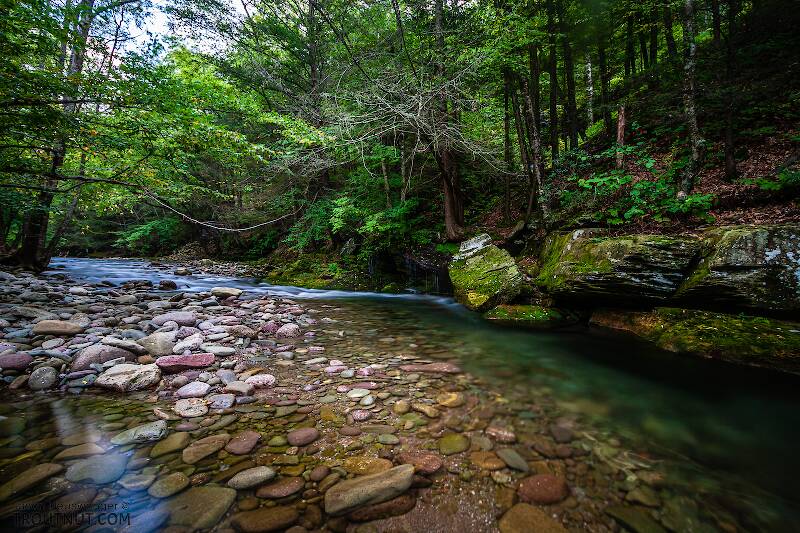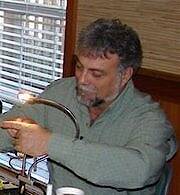
Blue-winged Olives
Baetis
Tiny Baetis mayflies are perhaps the most commonly encountered and imitated by anglers on all American trout streams due to their great abundance, widespread distribution, and trout-friendly emergence habits.
Featured on the forum

This specimen keys to the Epeorus albertae group of species. Of the five species in that group, the two known in Washington state are Epeorus albertae and Epeorus dulciana. Of the two, albertae has been collected in vastly more locations in Washington than dulciana, suggesting it is far more common. On that basis alone I'm tentatively putting this nymph in albertae, with the large caveat that there's no real information to rule out dulciana.

Troutnut is a project started in 2003 by salmonid ecologist Jason "Troutnut" Neuswanger to help anglers and
fly tyers unabashedly embrace the entomological side of the sport. Learn more about Troutnut or
support the project for an enhanced experience here.
Taxon on Oct 30, 2010October 30th, 2010, 4:04 pm EDT
Fred-
Nice looking fly. You may have meant to say either caddis pupa or sedge pupa, but not caddis sedge, as that's a bit redundant. Generally speaking, trichoptera are referred to as sedge north of the Canada/USA border, and as caddis south of that border. Same insect, different common name.
Nice looking fly. You may have meant to say either caddis pupa or sedge pupa, but not caddis sedge, as that's a bit redundant. Generally speaking, trichoptera are referred to as sedge north of the Canada/USA border, and as caddis south of that border. Same insect, different common name.
FredH on Oct 31, 2010October 31st, 2010, 4:29 am EDT
Thanks Roger . I didn't even know Louisiana had species of caddis until last year when I imported some rainbows. I noticed the trout rissing and found thru the next few months that we not only have caddis , but mayflys ,midges and a rather large crane fly hatch. I have been studying the life cycles of these and other aquatic insects as they pertain to fishing. I guess it would help now if I studied their scientific and common names.
Fred
Fred
Taxon on Oct 31, 2010October 31st, 2010, 6:10 am EDT
Fred-
Way to go. Louisiana has ~33 mayfly species, ~103 caddisfly species, and ~25 stonefly species.
Mayflies may (or may not) have common names. If they do, will be at the genus and/or species level, and are likely to have been assigned by flyfishers, and have eventually come into common usage, often on a regional basis. As a result, there will often be multiple different names for the same genus or species, and the same common name used for multiple genera and/or species
Caddisflies popular with flyfishers have been assigned common names at the genus level, primarily by Gary LaFontaine in his great book, Caddisflies.
Stoneflies have common names assigned at both the species and subfamily level. My understanding is that it was done for all NA stoneflies known at the time, many years ago (perhaps in the 80s or early 90s), by a committee of scientific (and other) folks, which (I believe) to have been organized and led by Dr. Bill Stark. As a result, common names seem not to have been assigned for stonefly species which have subsequently been discovered and assigned scientific names.
Way to go. Louisiana has ~33 mayfly species, ~103 caddisfly species, and ~25 stonefly species.
Mayflies may (or may not) have common names. If they do, will be at the genus and/or species level, and are likely to have been assigned by flyfishers, and have eventually come into common usage, often on a regional basis. As a result, there will often be multiple different names for the same genus or species, and the same common name used for multiple genera and/or species
Caddisflies popular with flyfishers have been assigned common names at the genus level, primarily by Gary LaFontaine in his great book, Caddisflies.
Stoneflies have common names assigned at both the species and subfamily level. My understanding is that it was done for all NA stoneflies known at the time, many years ago (perhaps in the 80s or early 90s), by a committee of scientific (and other) folks, which (I believe) to have been organized and led by Dr. Bill Stark. As a result, common names seem not to have been assigned for stonefly species which have subsequently been discovered and assigned scientific names.
Sayfu
Posts: 560
Posts: 560
Sayfu on Aug 31, 2012August 31st, 2012, 6:27 am EDT
I misuse that term sedge as well, often using it to describe a big caddis as one would call a big May a drake. Don't know why. I just call the big Cinnamon sedge as a sedge, etc. The big skittering sedge in Canada, Banksiola crotchi, the travelling sedge is why I think that. Although if I'm around anglers that call a local caddis a "weedy-water sedge", and it is small, I use that term also.
Entoman on Sep 1, 2012September 1st, 2012, 5:27 pm EDT
I agree, Jere. With the exception of Hydropsyche (which they usually shorten to "hydro") most anglers I run into have their eyes kinda glaze over if you start to mention caddis by their scientific names. Mayflies are tough enough!:)
In my neck of the woods, the roster of adult names that are used is pretty limited:
October or Fall Caddis
Grannom or Mother's Day Caddis
Hydro or Psyche (occasionally put together properly though often applied in error)
Motor Boat Caddis
The rest are simply caddis described by size & color, as in "#16 brown caddis" or "tiny black caddis with a green body." :)
As far as the use of the word "sedge", my experience has been the same as Taxon's. The only western anglers I've ever run into stateside that use that word are those few fairly comfortable with the scientific names as well (usually due to being thoroughly versed in the work of LaFontaine.:)
BTW, I think "Traveling Sedge" has a much better ring to it than "Moter Boat Caddis", but that's the way it goes....:)
In my neck of the woods, the roster of adult names that are used is pretty limited:
October or Fall Caddis
Grannom or Mother's Day Caddis
Hydro or Psyche (occasionally put together properly though often applied in error)
Motor Boat Caddis
The rest are simply caddis described by size & color, as in "#16 brown caddis" or "tiny black caddis with a green body." :)
As far as the use of the word "sedge", my experience has been the same as Taxon's. The only western anglers I've ever run into stateside that use that word are those few fairly comfortable with the scientific names as well (usually due to being thoroughly versed in the work of LaFontaine.:)
BTW, I think "Traveling Sedge" has a much better ring to it than "Moter Boat Caddis", but that's the way it goes....:)
"It's not that I find fishing so important, it's just that I find all other endeavors of Man equally unimportant... And not nearly as much fun!" Robert Traver, Anatomy of a Fisherman
Quick Reply
Related Discussions
Topic
Replies
Last Reply
1
Apr 18, 2007
by Troutnut
by Troutnut
0
May 6, 2011
by Jtberez
by Jtberez





